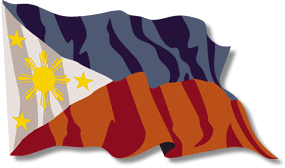
One of the more obvious marks left by Spanish rule in the Philippines is the prevalence of Hispanic surnames among Christianized Filipinos. Those who lived in remote areas and were not subjugated escaped this fate. Many people in the mountain areas of Luzon, Mindanao, Mindoro, Palawan, and other places retained their way of life, their culture, and their way of naming themselves. Thus, a Yam-ay in Mindoro today does not have a name like Claudette Villanueva as would probably have been the case had she lived among the conquered people.
Before the Spaniards arrived, a person's second (family, not middle) name was usually taken from one of his children. Thus, Timbô who had a son named Pitík was known as Timbô, amá ni Pitík. Compare this with the Western custom of sons taking their names from their fathers like Peter, son of John, or Peter Johnson. Sometimes, a physical feature was used to describe a person like Pitong Kirat for a certain Pito who only had one good eye.
Many early Christianized Filipinos named themselves after the saints so much so that it caused consternation among the Spanish authorities. Apparently, Christianization worked much too well and there were soon too many Santoses, San Joses, San Antonios, and San Buenaventuras to suit those in power. They were forced to change their last names unless they could prove that their family had been using it for several generations.
...And so, on November 21, 1849 Governor General Narciso Clavería ordered a systematic distribution of family names for the natives to use. The Catalogo Alfabetico de Apellidos was produced and approved names were assigned to families in all towns. Name distribution was so systematic that civil servants assigned family names in alphabetical order causing some small towns with only a few families to end up with all names starting with the same letter. (This interesting situation remained until fairly recent times when people became more mobile and started seeking mates from other towns.)
It's a list of Philippine names that remained in use even after the Clavería edict.